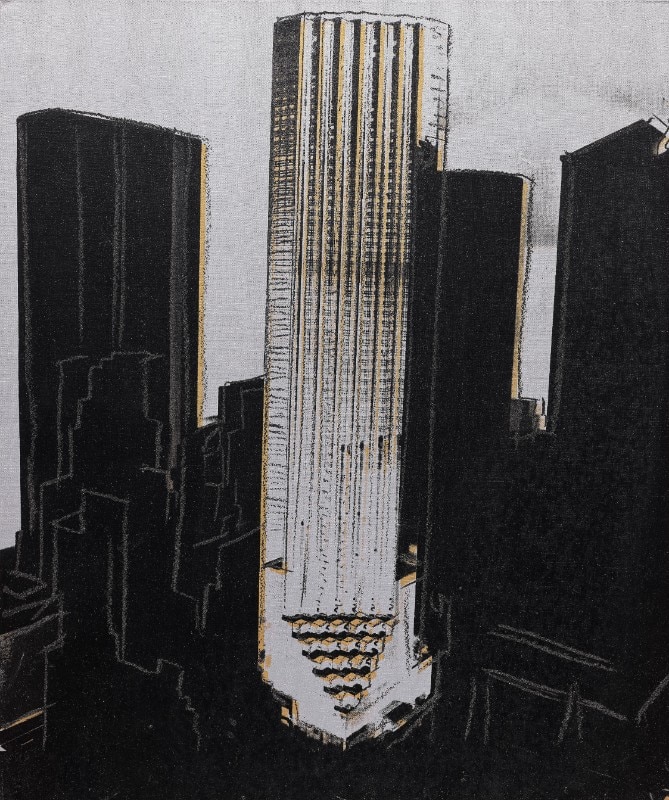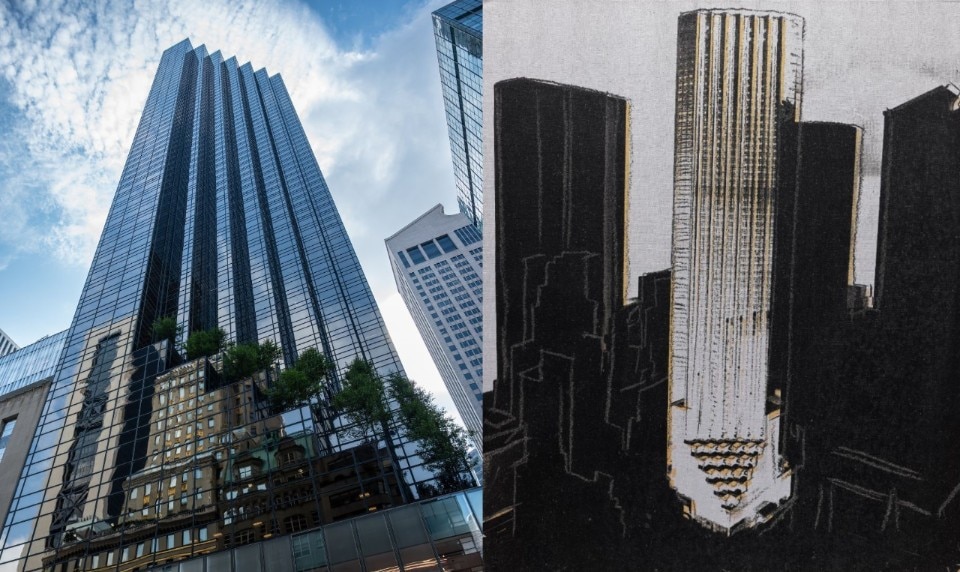New York, 1980s.
The creative energy and magnetic aura of that elitist and transgressive circle that was the Factory are now in decline, and by 1984, the curtain will fall definitively on the spaces of 860 Broadway. New talents are emerging, with Jean-Michel Basquiat standing out, his almost naive freshness and primitive mark not leaving Warhol completely indifferent. But that’s another story.
Nevertheless, Andy Warhol, who'll be shot to death in 1087, still embodies the type of new character, that of the artist-entrepreneur: he produces art-commodity with a fierce awareness, transforming consumerism into a conceptual act that begins with rapid, serial production and ends with the sale to New York's elite. The strength of his Pop lies in his ability to play with the system without ever being subjugated by it; or rather, even when he is, he bends it to serve the branding of himself.
On the evening of February 22, 1981, at lawyer Roy Cohn’s birthday party, what must have seemed like a lucky coincidence to the artist now reads like a historic encounter: Andy, Ivana, and Donald Trump are in the same room.
Amidst the final touches on his newly built Trump Tower, The Donald doesn’t miss the opportunity and commissions the Pop Art father to create a celebratory piece for the skyscraper.
It seemed like a perfect match, yet something goes wrong.

Marc Balet introduces the artist and the magnate. Balet, a former architect who, on the suggestion of their mutual acquaintance Fran Lebowitz, is now the artistic director for Warhol's "Interview" magazine. It’s Ivana who asks him to intercede with the artist and have him create a series of portraits of the building to be displayed on either side of the entrance to the residential floors.
After the meeting, Warhol, who obsessively documents every detail of his life by dictating diary entries to his secretary Pat Hackett (published in "The Andy Warhol Diaries", 1989, by Harper & Row), is generally enthusiastic. Trump is described as a striking, virile type with a particularly fat wallet.
"I had to meet Donald Trump in his office (taxi $5.50)," writes Warhol. "Donald Trump is really handsome."
A site visit to photograph the model of the skyscraper, a few quick sketches, and Warhol gets to work, creating a series of silkscreens in black, gray, silver, and gold, using diamond dust and glitter. The production included four silver works and four gold ones, each sold as a set of images for $100,000 each, Balet explained.
But Trump’s reaction to the presentation of the works was far from pleased: those cold, albeit shiny tones didn’t match the colors of the interiors where they would be hung.
The Trumps came down. I showed them the Trump Tower paintings I had made. It was a mistake to make so many, I think it confused them. (...) I think Trump is a bit stingy, I have that feeling, and Marc Balet, who organized the whole thing, was a bit shocked.
Thus, Warhol, who had not requested any advance payment for the production, probably had to pay for another taxi to take him home with all the artworks.
Balet, recently, shared a slightly different recollection of the event with Gothamist: "They rejected the paintings because they thought Andy's work wasn't up to Trump’s standards. So Andy got upset with me."
Some time later, Warhol handed the paintings over to an art dealer in Switzerland, who sold them to private collectors (two of which are now on display at the Warhol Museum in Pittsburgh). However, the sale did little to ease Warhol's resentment: in February 1983, despite their differences, neither Warhol nor the Trumps backed down, showing up at yet another birthday party for Roy Cohn, a conservative lawyer who built his career by accusing 'communists and homosexuals' and later died of AIDS, even denying it on his deathbed. One can easily imagine Andy and Ivana exchanging biting remarks on a couch. But revenge came a year later when Warhol, invited to judge the New Jersey Generals cheerleader auditions (a football team Trump had bought), showed up two hours late, claiming he had an urgent need to pray.
A feud that lasted until today, and more specifically until November 19, 2024, when one of the four works created for the Trumps was sold at Phillips' evening auction in New York. Initial estimate: $500,000 - $700,000. It sold for $952,500.
And even though Warhol is no longer here to enjoy it, the former couple certainly is. No statements have been released, but one can imagine The Donald attributing the auction result to his re-election as President of the United States.
Hard to argue with him, right?
But the market, especially the art market, is a chessboard where any move is valid, and those 'tacky' and perhaps mismatched works now have a new value.









